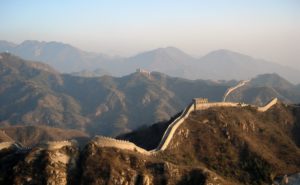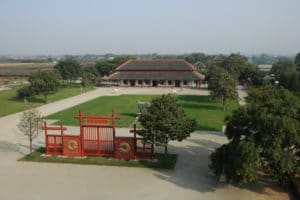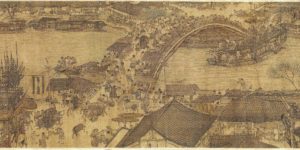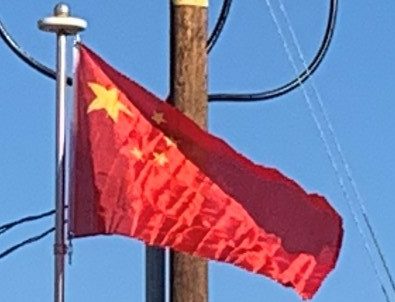
Following a widespread civil war during which the imperial library at Xianyang was burned, the Han dynasty emerged to rule China between 206 bce and ce 220, creating a cultural identity among its populace still remembered in the ethnonym of the Han Chinese. The Han expanded the empire’s territory considerably, with military campaigns reaching Central Asia, Mongolia, South Korea, and Yunnan, and the recovery of Guangdong and northern Vietnam from Nanyue. Han involvement in Central Asia and Sogdia helped establish the land route of the Silk Road, replacing the earlier path over the Himalayas to India. Han China gradually became the largest economy of the ancient world. Despite the Han’s initial decentralization and the official abandonment of the Qin philosophy of Legalism in favor of Confucianism, Qin’s legalist institutions and policies continued to be employed by the Han government and its successors.

After the end of the Han dynasty, a period of strife known as Three Kingdoms followed, whose central figures were later immortalized in one of the Four Classics of Chinese literature. At its end, Wei was swiftly overthrown by the Jin dynasty. The Jin fell to civil war upon the ascension of a developmentally-disabled emperor; the Five Barbarians then invaded and ruled northern China as the Sixteen States. The Xianbei unified them as the Northern Wei, whose Emperor Xiaowen reversed his predecessors’ apartheid policies and enforced a drastic sinification on his subjects, largely integrating them into Chinese culture. In the south, the general Liu Yu secured the abdication of the Jin in favor of the Liu Song. The various successors of these states became known as the Northern and Southern dynasties, with the two areas finally reunited by the Sui in 581. The Sui restored the Han to power through China, reformed its agriculture, economy and imperial examination system, constructed the Grand Canal, and patronized Buddhism. However, they fell quickly when their conscription for public works and a failed war in northern Korea provoked widespread unrest.
Under the succeeding Tang and Song dynasties, Chinese economy, technology, and culture entered a golden age. The Tang Empire returned control of the Western Regions and the Silk Road, and made the capital Chang’an a cosmopolitan urban center. However, it was devastated and weakened by the An Shi Rebellion in the 8th century. In 907, the Tang disintegrated completely when the local military governors became ungovernable. The Song dynasty ended the separatist situation in 960, leading to a balance of power between the Song and Khitan Liao. The Song was the first government in world history to issue paper money and the first Chinese polity to establish a permanent standing navy which was supported by the developed shipbuilding industry along with the sea trade.

Between the 10th and 11th centuries, the population of China doubled in size to around 100 million people, mostly because of the expansion of rice cultivation in central and southern China, and the production of abundant food surpluses. The Song dynasty also saw a revival of Confucianism, in response to the growth of Buddhism during the Tang, and a flourishing of philosophy and the arts, as landscape art and porcelain were brought to new levels of maturity and complexity. However, the military weakness of the Song army was observed by the Jurchen Jin dynasty. In 1127, Emperor Huizong of Song and the capital Bianjing were captured during the Jin–Song Wars. The remnants of the Song retreated to southern China.
